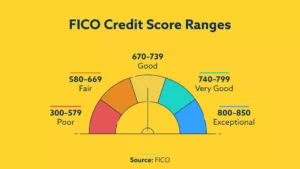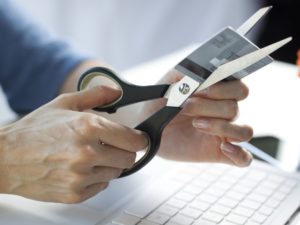Contrary to popular belief student loan debt, in some cases, can be discharged in bankruptcy proceedings. It’s incredibly difficult, but not completely impossible.
In 2005, the bankruptcy code was updated to make private loans “non-dischargable” in a personal bankruptcy making them very different from other private debts that can be forgiven or written off in bankruptcy. The change in law put private student loans on the same level as federal or state loans and child support payments – non-negotiable and never going away.
The theory behind the change was that it would eliminate certain borrowers from the market who take on loans with the expectation of discharging them in bankruptcy. The problem is there was no evidence that this was ever an issue to begin with. The change in bankruptcy laws solved a nonexistent problem.
What has actually occurred is the consistent rising costs of college tuition, lack of high paying jobs for college graduates and student loan debt totaling $1.2 trillion, twice what it was in 2007.
Myth of the No-Bankruptcy Student Loan
Most student loan borrowers believe the myth that there’s no chance to have student loans discharged, so they don’t even attempt it. But in a study by Jason Iuliano, a Harvard trained attorney, it was found that 4 out of 10 borrowers who attempted to discharge student loans were successful.
The numbers are not spectacular, but they’re not inconsequential either. More disturbingly, he found that in just the one study year, 69,000 debtors would have been good candidates to receive some or full relief from their student loan debt but they never even tried to discharge the loans. In fact, few ever try to discharge their student loans in bankruptcy. “99.9% of student loan debtors in bankruptcy never attempt to get a discharge,” says Iuliano.
Undue Hardship Can Get Student Loans Discharged
The research found that consumers that were able to successfully discharge their student loans in bankruptcy under the undue hardship standard had these three characteristics:
- Less likely to be employed.
- More likely to have a medical hardship.
- More likely to have lower annual incomes the year before they filed for bankruptcy.
In order to pursue a successful claim to discharge the loans in bankruptcy a student loan borrowers should be able to pass the Brunner Test. While all courts are different, many use this test to determine if requiring a consumer to continue to be responsible for an education debt would cause him or her undue hardship. There are essentially three criteria a consumer has to meet under the Brunner test: (1) a current inability to repay the loans, (2) a future inability to repay the loans, and (3) a good faith effort to repay the loans. Many borrowers can easily meet these criteria.
Why consumers don’t include student loans in BK
Iuliano’s report found that only about 0.1 percent of consumers with student loans attempt to include them in their bankruptcy proceedings. Current bankruptcy law exempts education loans and obligations from eligibility for discharge unless doing so would cause the consumer undue hardship. But the problem is that undue hardship is not clearly defined within bankruptcy law, leaving the bankruptcy courts to decide what this means.
President Obama signed the Student Aid Bill of Rights on March 10, 2015. In the Student Aid Bill of Rights one section in particular points to the government making it easier for struggling students to eliminate their debts in bankruptcy. Section 3(b) says, “By July 1, 2015, the Secretary of Education shall issue information highlighting factors the courts have used in their determination of undue hardship, to assist parties who must determine whether to contest an undue hardship discharge in bankruptcy of a Federal student loan.”
There seems to be a move toward a unified set of guidelines that bankruptcy attorneys and courts will be able to use to make the elimination of federal student loans easier. “After assessing the potential applicability of consumer protections in the mortgage and credit card markets to student loans, recommendations for statutory or regulatory changes in this area, including, where appropriate, strong servicing standards, flexible repayment opportunities for all student loan borrowers, and changes to bankruptcy laws.”
There is a current case making headlines in Erie, PA where a 52-year-old woman is awaiting a judge in U.S. Bankruptcy Court in Erie to decide whether she must repay nearly $22,000 in student loans. Her lender, Educational Credit Management Corp., opposes her request for relief.
The debtor graduated from Mercyhurst College in 1993 with an associate degree in business management and $11,830 in student loans. She filed for Chapter 7 bankruptcy in March 2014. The debtor claims in court records that difficult economic and personal circumstances prevented her from paying anything toward the loans, now total $21,593, with interest.
She earns $8.97 an hour as a customer-service representative for a retailer, and uses food stamps and loans from a relative to pay for living expenses, according to court records.
How U.S. Bankruptcy Judge Thomas P. Agresti ultimately resolves the case depends on his interpretation of “undue hardship.”
Private Student loans that can be included BK
The bankruptcy code describes an education loan as one that, in part, was used to attend an eligible education institution, which is further defined as one that is eligible to participate in the federal student aid programs. Some consumers have been successful in arguing that, because their private student loans were used to attend a school not eligible for federal student aid programs, the loans don’t fall under the definition of an education loan and should therefore be eligible for discharge.
Should you file for Bankruptcy
There is growing evidence that loan burdens are becoming a problem that have the potential to impact borrowers for decades to come. To be clear, if you borrow money, you have a moral and legal obligation to pay that money back but sometimes in life there are overwhelming financial circumstances that can only be alleviated through bankruptcy relief.
For some the new income-based repayment programs have provided a manageable option to deal with student loans. But for those whose struggle can’t be resolved through a long-term repayment plan, bankruptcy should be a viable option.











